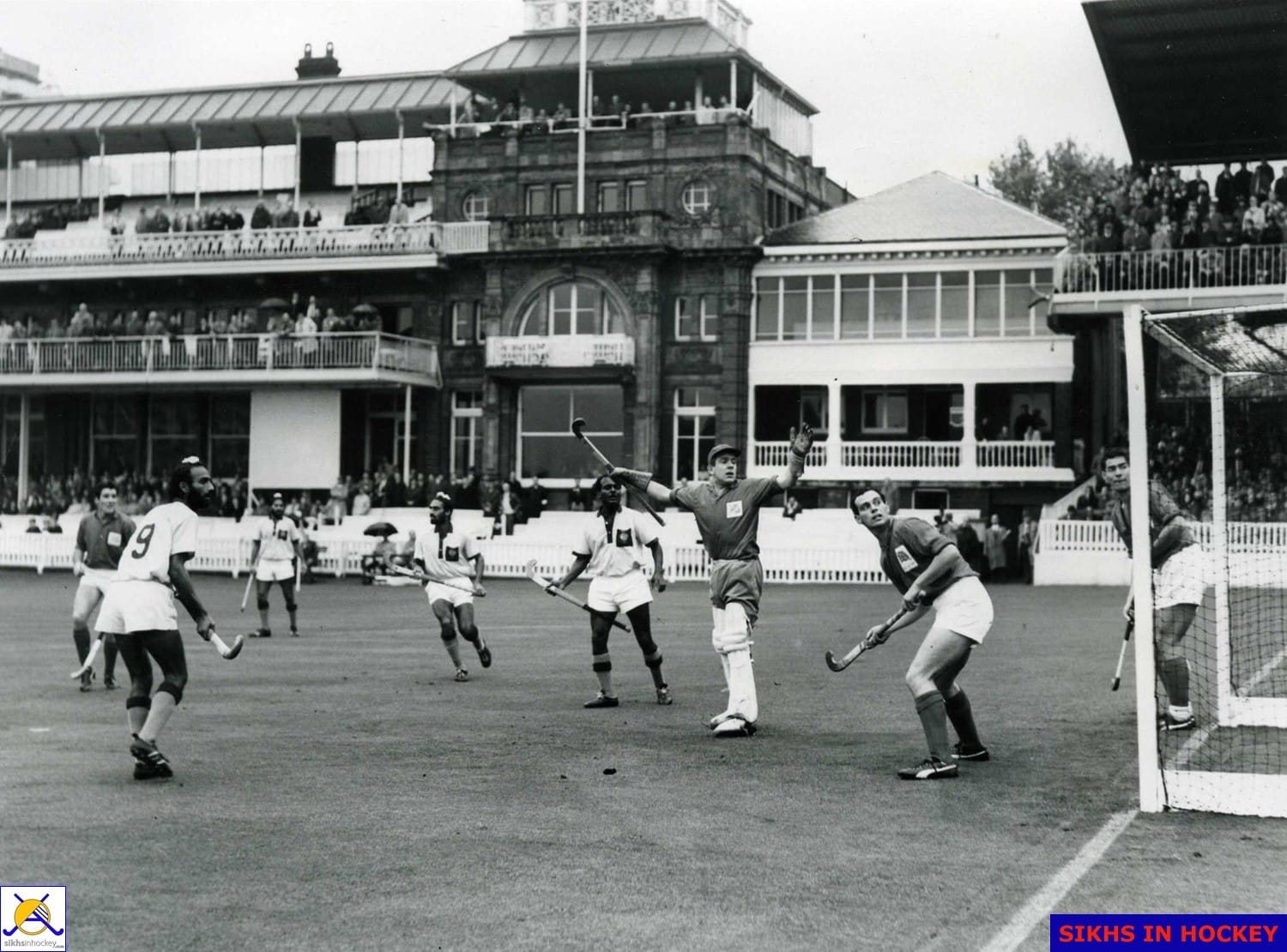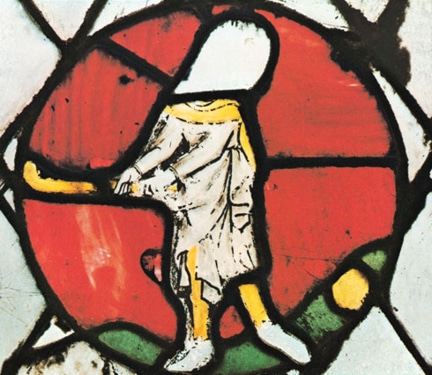Today’s global, modern game of hockey is commonly held to have its origins as an organised sport in mid-18th-century England, but there are many instances of men and boys playing with ‘hockey-like’ sticks going back centuries – good examples are games such a bandy and goff. These early games may not be hockey in the sense that there is no direct lineage, but the visual links are still interesting.
Recently, one of our volunteers was researching in back copies of Hockey Field magazine and came across a fascinating article about a carved figure wielding a ‘hockey stick’ depicted in one of the foundation stones of Canterbury Abbey (see article duplicated below).

This 1937 article from Hockey Field magazine refers to a stone “portrait of an early Kentish [hockey] player” in Canterbury Cathedral.
Dated 2 October 1937, the Hockey Field article describes the figure as a 12thcentury Kentish man whose:
“…face had been broken away, all but his mouth, beard and tongue, which I regret to say, he is poking out … Perhaps he derides some opponent from a neighbouring village or county!”
The article goes on to mention how one of the stained-glass windows in the Cathedral also shows an early depiction of a boy with a hockey stick. The Hockey Museum was already aware of hockey imagery in the stained-glass windows of Gloucester Cathedral but this reference to a window in Canterbury Cathedral was new. We contacted the Cathedral Archives to see what they could tell us.
Daniel Korachi-Alaoui from the Canterbury Archives and Library was able to confirm that the stone carving does still exist and is located in the wall of the Choir House, where the boy choristers live. The Choir School closed in 1972 but the choristers still live there and instead attend the local St Edmund’s School. That room is now used as the TV room rather than the dining room. He shared a recent photo of the stone.

A carved figure wielding a ‘hockey stick’ depicted in one of the foundation stones of Canterbury Cathedral. Today the stone is not on public display being located in the Choir House of Canterbury Cathedral.
The stained-glass image of the boy with the hockey stick is in the North Quire Aisle in a beautiful panel dating from the late 12th century (not the 13th century as the Hockey Field article suggests). It depicts the Six Ages of Man as described by Saint Augustine of Hippo: infantia (infancy), pueritia (childhood), adulescentia (adolescence), inventus (young manhood), gravitas (settled life) and senectus (old age). It is the figure of pueritia who holds the stick but save for the infant, this beautifully ornate stained glass could be illustrating a lower men’s team from many a hockey club nationwide.

A stained-glass window at Canterbury Cathedral showing the Six Ages of Man. The figure of pueritia (childhood) holds a ‘hockey stick’. The window dates from the late 12th century, around the time that the Archbishop of Canterbury, Thomas Becket, was infamously murdered, allegedly on the orders of King Henry II of England.
While we might refer to the stick as a ‘hockey stick’, it is more likely to be a stick used in bandy, an early hockey-like game played with a stick and ball. Bandy first appeared in England back in the 12th century but apart from the shape of the stick it bore little resemblance to the game we know as hockey. It has several mentions in English literature and by the 19th century it had developed into a codified game played on the frozen, flooded meadows of the East Anglian Fens. It spread to Russia and Scandinavia where it is still a very popular sport today, played outdoors on football-sized pitches as an 11-a-side game more akin to ice hockey.
While these lovely Medieval depictions in Canterbury Cathedral may not be hockey players in the modern sense, the development of these earlier stick and ball games must have had some influence on the later emergence of the organised, codified sport we now call hockey. After all, modern hockey did not come out of a vacuum.









